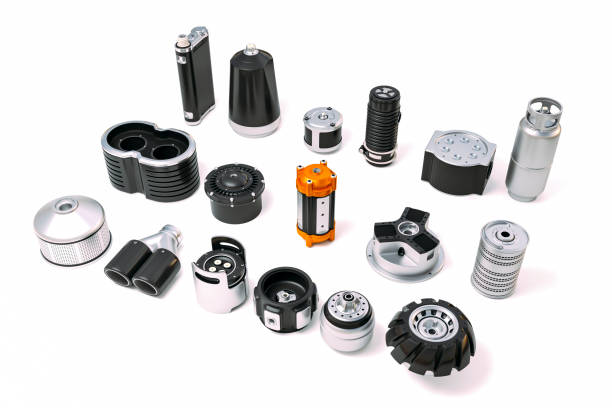In industries where failure is not an option, the reliability of every single component is paramount. From aerospace to medical manufacturing, high-demand environments push machinery to its limits. The constant stress from extreme temperatures, high pressures, and corrosive substances means that only the most robust materials and designs can withstand the test of time. Choosing the right components isn’t just about performance; it’s about ensuring operational safety, minimizing costly downtime, and maintaining productivity.
This post will explore the key characteristics of durable components designed for these challenging settings. We will examine the materials, design principles, and quality control measures that define industrial-grade parts. Understanding these factors will help you make more informed decisions when selecting equipment that needs to perform flawlessly under pressure.
What Makes a Component “Durable”?
Durability in an industrial context goes beyond simple longevity. It’s a measure of a component’s ability to resist wear, fatigue, and failure under specific operational stresses. Three main pillars support this resilience: material science, engineering design, and rigorous testing.
The Right Material for the Job
The foundation of any durable component is the material it’s made from. The choice depends entirely on the application’s specific challenges.
- Stainless Steel: A popular choice for its excellent corrosion resistance and strength. Grades like 316L are common in food processing and pharmaceutical industries because they can withstand harsh cleaning chemicals and prevent contamination.
- Titanium Alloys: Known for their high strength-to-weight ratio and exceptional resistance to heat and corrosion, titanium alloys are indispensable in aerospace and marine applications. They maintain their structural integrity even at extreme temperatures.
- High-Performance Polymers: Materials like PEEK (Polyether Ether Ketone) and Teflon™ offer a unique combination of chemical resistance, low friction, and high-temperature tolerance. They are often used for seals, bearings, and insulators in chemical processing and electronics manufacturing, where metal parts may not be suitable.
- Ceramics: Advanced ceramics, such as alumina and zirconia, provide superior hardness and resistance to wear and thermal shock. They are often used in cutting tools, abrasive waterjet nozzles, and as protective coatings on parts exposed to extreme friction.
Smarter by Design
Even the best material will fail if the component’s design is flawed. Engineering for durability involves creating shapes and structures that effectively manage stress and reduce wear.
- Stress Distribution: Engineers use Finite Element Analysis (FEA) to simulate how a part will react to operational forces. This allows them to identify potential weak points and modify the design to distribute stress more evenly, preventing cracks and fractures.
- Friction and Wear Reduction: Design features that minimize surface contact and friction are crucial. For example, using roller bearings instead of plain bearings can significantly reduce wear in rotating machinery. Polished surfaces and specialized coatings also play a vital role in lowering the coefficient of friction.
- Modular and Serviceable Designs: In a high-demand environment, a component that is easy to inspect, service, or replace minimizes downtime. A modular design allows for the quick swap-out of worn parts without having to dismantle the entire assembly.
Quality Control: The Unseen Hero
The journey from raw material to a finished, durable component is governed by strict quality control. Every step is monitored to ensure the final product meets exacting standards.
- Material Certification: The process begins with verifying the raw materials. Suppliers must provide certificates confirming the material’s composition and properties, ensuring it meets the required specifications.
- Precision Manufacturing: Advanced manufacturing techniques like CNC (Computer Numerical Control) machining ensure that every part is produced with tight tolerances. This consistency is vital for proper fit and function in complex assemblies.
- Non-Destructive Testing (NDT): Before a component is put into service, it undergoes rigorous testing that doesn’t damage the part. Methods like ultrasonic testing, X-ray inspection, and dye penetrant testing are used to detect hidden flaws like internal cracks or voids that could lead to catastrophic failure.
An example of where these principles come together is in an air compressor oil less system used in medical facilities. These machines must provide clean, contaminant-free air without fail. The internal components, from the piston rings made of high-performance polymers to the corrosion-resistant stainless steel valves, are engineered for maximum durability and reliability. The design ensures minimal friction and wear, and each part is rigorously tested to meet strict healthcare standards.
Investing in Reliability
In high-demand industrial sectors, the true cost of a component is not its purchase price but the cost of its potential failure. Downtime, safety incidents, and product recalls can have a devastating impact on a business. By prioritizing components built with superior materials, intelligent design, and backed by stringent quality control, organizations can protect their operations and build a foundation for long-term success. Choosing durable components is an investment in reliability, safety, and peace of mind.
